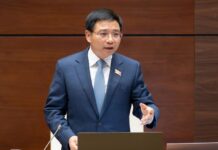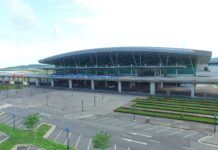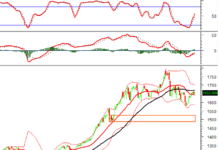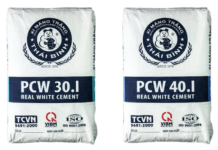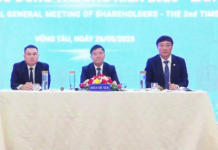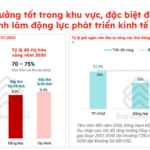**The Office Market in HCMC Heats Up**
According to a report by CBRE Vietnam, the office market in Ho Chi Minh City (HCMC) in Q1/2024 is showing signs of improvement in rental prices and occupancy rates. While no new office supply was recorded in HCMC, the upcoming Etown 6 building (Tan Binh District) is set to open soon and has already secured a pre-commitment leasing rate of approximately 20%.
Average asking rents in HCMC have improved, with Grade A asking rents reaching USD 47.2/m2/month (nearly VND 1.2 million/m2), a 2.6% increase from the previous quarter and the highest Grade A asking rent in 15 years. Meanwhile, Grade B average asking rents stand at USD 26/month (over VND 650,000/m2), up 1% from the previous quarter and 2% year-on-year.
According to CBRE, the increase in Grade A office rents in HCMC is primarily driven by new buildings that have recently started leasing up. In addition, some buildings that have completed renovations and upgrades are also expecting to see their asking rents rise.

The dynamics in HCMC’s office market are currently shifting, with tenants gaining a negotiating advantage in the short term.
Similarly, a report by real estate consulting firm Avison Young Vietnam indicates that in Q1/2024, the office leasing market in HCMC became more dynamic in terms of supply, with several projects nearing completion and expected to become operational this year.
Nhung Vu, Director of Office Services at Avison Young Vietnam, believes that the dynamics in HCMC’s office market are currently shifting, with tenants gaining a negotiating advantage in the short term.
However, rents are expected to continue rising in the medium to long term. Therefore, tenants need to have a long-term strategy when it comes to their workspace, whether it is leasing new space, relocating, expanding their offices, or even investing in their own buildings.
Savills Vietnam’s forecast also suggests that in 2024, demand for office space will increase by approximately 7%. Tenants are increasingly looking for new, high-quality buildings that meet sustainability standards and green certifications. Notably, sectors such as finance and manufacturing remain the main occupiers driving the market amidst economic fluctuations.
According to Knight Frank Vietnam, during Q1/2024, HCMC’s office leasing market continued to show positive signs of recovery. In Q1/2024, HCMC’s office leasing market continued to show positive signs of recovery as new buildings achieved healthy absorption rates, while several successful transactions were recorded with leasing areas reaching up to 10,000 m2 in the city center.
Grade A office rents increased to USD 58.06/m2/month, up 1.98% from the previous quarter and 0.3% year-on-year. The Grade B office segment reportedly performed well, with average asking rents at USD 34.31/m2/month and a vacancy rate of 9%.
**Tenants Gain More Options**
Leo Nguyen, Director of Knight Frank Vietnam’s Tenant Representation and Strategy, commented that in the past, it was rare to witness leasing transactions for spaces exceeding 10,000 m2 in the city; however, in the first quarter of this year alone, three such transactions occurred in newly opened office buildings. This indicates that demand for large office spaces is rising rapidly due to the expansion of foreign businesses. The surge in demand also reflects the positive business climate and the optimistic outlook for Vietnam’s commercial real estate market.
In terms of tenants, Knight Frank Vietnam observed that most large transactions in Q1/2024 were from technology (75%), retail (9%), and pharmaceutical (6%) companies, with the majority relocating their offices (94%) and leasing larger spaces than before (72% over 2,000 m2). Many companies that are relocating are also opting for larger spaces compared to their previous locations.

HCMC’s office market is witnessing more active leasing activities than its counterpart in Hanoi.
According to Knight Frank Vietnam’s projections, in HCMC, an additional 80,000 m2 of Grade A supply will be added by the end of 2024. The abundant supply in the Grade A segment, coupled with high asking rents, is expected to push average asking rents to around USD 60/m2/month and a vacancy rate of approximately 27%. Meanwhile, Grade B offices are expected to see a gradual reduction in asking rents, down to around USD 33/m2/month, with a vacancy rate of 13%.
“Many office buildings in HCMC have been enjoying occupancy rates above 90% for the past few years. However, the increase in supply will have a significant impact on both landlords and tenants. Landlords will need to adjust to the changing market conditions and be prepared to offer more attractive lease terms. On the other hand, tenants will have more options and greater bargaining power when negotiating lease contracts,” said Leo Nguyen.
Regarding the situation in the coming quarters, CBRE Vietnam forecasts that given that the HCMC market will not have any new Grade A supply in the central area in 2024, existing Grade A office rents, particularly in the downtown area, will benefit and continue to rise.
Meanwhile, Grade B projects, which are in the final stages of completion and are all located outside the central business district, are expected to keep HCMC’s average Grade B office rent relatively unchanged.
Pham Ngoc Thien Thanh, Head of Research and Consulting at CBRE in HCMC, stated that the HCMC office market is currently experiencing more active leasing movements compared to the office market in Hanoi, and is being driven by large-scale leasing transactions in newly completed buildings.








